

 Cheap wines are sometimes criticised for being “blended.” Strangely enough, this is seen as something negative. But in fact most wines, almost all, are blended.
Cheap wines are sometimes criticised for being “blended.” Strangely enough, this is seen as something negative. But in fact most wines, almost all, are blended.
More expensive wines are also blended. In Champagne they blend wines from an area as big as 30,000 hectares. In Bordeaux they blend 3-4 different grape varieties. A red Burgundy is a blend of Pinot Noir from different parcels that can be quite far away from one another. In many regions wines aged in oak barrels are blended with wine aged in steel tanks. Or wine aged in new oak barrels with wine aged in old oak barrels. So how can “blended” wine be wrong?
Another criticism aimed at the cheap “blends” is that they are designed to fit a particular taste. Maybe the critics mean that other wines, what they call terroir wines, are a footprint of the vineyard and the vintage, a genuine wine.
But even these wines, the more expensive, are adjusted. Maybe these wines have a different target group, but they are still adjusted to fit the taste of the target group. Wine that is a bit unbalanced can be fixed in the cellar. It may be a bit more oak in a Bordeaux to give softness or a little more sugar in a Champagne to hide the acidity.
There are no “genuine” wines that are a pure reflection of terroir, soil, climate and grapes. All wines are “manipulated” by a winemaker to create the specific wine that he (or she) wants to make. With the given conditions and raw material he has to play with.
Most producers want to give consumers what consumers want. For the whole thing is about selling the wines, without that no wine producer will survive.
It is not “bad” to make cheap wine. Cheap wines have a raison d’etre too. Just like that it is not bad to charge indecent amounts of money for a bottle of wine (Krug Clos d’Ambonnay 2000 was just launched at around $2000. There is no taste that can motivate that.) As long as there are customers willing to pay.
The only thing that is “bad” is to make bad wine, wine that is worse than what it should be.
We must of course also mention the award that we have just received from the OIV for our latest book. We are immensely proud of that. The first time ever a book by Swedish authors has received that award. Read more about it further down in the Brief.
Britt & Per
PS: Recommend to your friends to read the Brief!
– – – – –
What’s on at BKWine Tours
- Bordeaux, September 23-27
- Douro Valley, October 21-25
- Chile and Argentina in South America, February 6-21, 2016
- South Africa, February 26 – March 7, 2016
For more information please contact us on email or on phone (we’re on French time), or go to our wine travel site on www.bkwinetours.com!
We also make custom designed wine tours – on-demand tours for you and a group of friends, for your company (maybe to scout new winegrowers?), for a special event… We can combine winery visits and wine touring with other activities: gastronomic workshops, visit to an oyster farm, truffles hunting, cheese making, and more. More info on the custom designed and bespoke BKWine wine tours and travel here!
Wine tours in Finnish: We also do wine tours in Finnish. And in German, Norwegian, Spanish…
Do you want the latest news and updates on our wine travel activity? Subscribe here! (Second alternative BKWineTours.com)
From the World of Wine
South Africa: Breedekloof Chenin Blanc Initiative
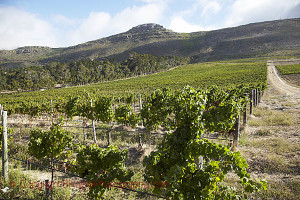 One of our favourite grapes among the whites is Chenin blanc and not least the one coming from South Africa. Of South Africa’s nearly 100 000 hectares of vineyards Chenin blanc is grown on more than 18 000 hectares. The Chenin plantings used to be larger but then, on the other hand, the quality was not so high and many Chenin grapes were used for distillation. Now the South African Chenin can be least as interesting as the French.
One of our favourite grapes among the whites is Chenin blanc and not least the one coming from South Africa. Of South Africa’s nearly 100 000 hectares of vineyards Chenin blanc is grown on more than 18 000 hectares. The Chenin plantings used to be larger but then, on the other hand, the quality was not so high and many Chenin grapes were used for distillation. Now the South African Chenin can be least as interesting as the French.
Breedekloof Wine Valley, a region just east of Paarl, has taken an interesting initiative to launch Chenin blanc as the great grape of the region. Here, say the growers in Breedekloof, Chenin blanc has found its true home. So far, nine producers will work together to promote this phenomenal grape, capable of producing a wide variety of wines, dry and sweet. The climate and soil in Breedekloof give a long and slow ripening season and a late harvest, which is ideal for Chenin blanc. Read more on Breedekloof Chenin Blanc Initiative.
The best is of course to enjoy South African Chenin Blanc on location! It is high time to sign up for our amazing South Africa wine tour, which starts February 27, 2016! We will see a lot of sights, such as Table Mountain and the Cape of Good Hope, but the wine will of course be the main attraction. Along with superb food!
Cork oaks in Provence
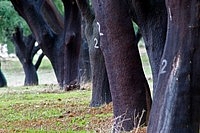 Portugal is the world’s largest cork producer but now competition is coming from Provence. Well, France will never have the volumes they have in Portugal. Portugal is still by far the world’s biggest cork producer. But this year 800,000 bottles will to be sealed with wine corks from cork oaks growing in the Massif des Maures and Massif de l’Estérel down in the Provence.
Portugal is the world’s largest cork producer but now competition is coming from Provence. Well, France will never have the volumes they have in Portugal. Portugal is still by far the world’s biggest cork producer. But this year 800,000 bottles will to be sealed with wine corks from cork oaks growing in the Massif des Maures and Massif de l’Estérel down in the Provence.
This exploitation of the Provencal cork oak is a collaboration between the Provence wine cooperative Estandon Vigneron and Diam, a French producer of technical corks. The Diam cork is a natural cork that undergo a special treatment that removes the molecule that may cause cork taint.
The Provence corks are marked with “Liege de Provence ‘(oak from Provence). So consumers will know that the cork comes from locally grown oak. There are 45 000 hectares of cork oak in Provence and around 800,000 in Portugal, mostly in Alentejo. Read more lavigne-mag.fr
2013 Hugel Gentil | Birgitta’s Wine of the Month
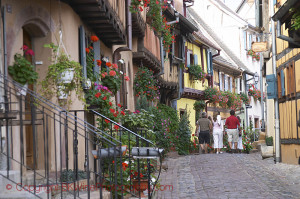 Hugel Gentil is a workhorse of wine from Alsace, a wine with a summery tone. The designation Gentil means that it is made from a blend of the Alsatian green grapes. In this case, Sylvaner, Pinot Gris, Riesling, Gewurztraminer and Muscat. The colour is so bright yellow that one could easily believe that it lacks substance. But it has both aromatic and floral aromas and a fruity and fresh flavour of peach, melon and orange blossom. There’s plenty of flavours in a rather solid body which makes the wine go well with for example a cold buffet table with both vegetables and meat, also with Asian flavours. A certain bitterness in the aftertaste makes it more of a food wine. Serve it very cold in order to reduce the perception of bitterness if you also want to have it as an aperitif. Price: ~10 euro.
Hugel Gentil is a workhorse of wine from Alsace, a wine with a summery tone. The designation Gentil means that it is made from a blend of the Alsatian green grapes. In this case, Sylvaner, Pinot Gris, Riesling, Gewurztraminer and Muscat. The colour is so bright yellow that one could easily believe that it lacks substance. But it has both aromatic and floral aromas and a fruity and fresh flavour of peach, melon and orange blossom. There’s plenty of flavours in a rather solid body which makes the wine go well with for example a cold buffet table with both vegetables and meat, also with Asian flavours. A certain bitterness in the aftertaste makes it more of a food wine. Serve it very cold in order to reduce the perception of bitterness if you also want to have it as an aperitif. Price: ~10 euro.
Fermentation: wild yeast or cultivated?
The vast majority of wines in the world, probably around 90%, ferment with added cultivated yeast. Most wine producers believe this provides a safer fermentation and a better wine. But a small group of winemakers prefer to use the natural yeast present on the grape skins and in the vineyard environment. The Dubernet Laboratory in Languedoc now wants to make it easier for growers who prefer the “natural” wild yeast.
The idea is that the lab people go to the winery and collect yeast from a must that ferments spontaneously. They will find a lot of different yeasts active. The best yeast species from this grower are then isolated in the lab and returned to him the following year. He can thus inoculate his must with his own yeast. The point with the whole operation is that the lab people have eliminated the worse “bad” yeast species such as those forming volatile acids or giving bad aromas. Read more on mon-viti.com
Nets to protect from hail, how do they affect the wine?
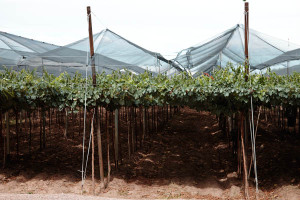 We hope that hail nets reduce the damage to grapes and vines if it hails, but how do the nets affect the ripening of the grapes, the development of the vines and the finished wine? Soon they will know in Burgundy. Hail nets are being tested here during a three-year period to see what happens in the vineyard. In total 28 hectares – 35 different plots – will be equipped with nets.
We hope that hail nets reduce the damage to grapes and vines if it hails, but how do the nets affect the ripening of the grapes, the development of the vines and the finished wine? Soon they will know in Burgundy. Hail nets are being tested here during a three-year period to see what happens in the vineyard. In total 28 hectares – 35 different plots – will be equipped with nets.
Violent hailstorms have caused great devastation in recent years in Burgundy. Hail nets are at the moment not very common in France. But you see them a lot in for example Mendoza in Argentina where hail is very frequent. Read more: vins-bourgogne.fr
If you join us on our wine tour to Argentina and Chile in February you will no doubt see some hail nets, and taste plenty of excellent wines. But you will most likely be spared from hail. The weather is warm summer.
Rosé gets brighter and brighter
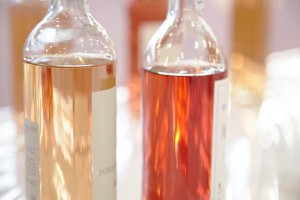 Rosé wines are not only getting more and more popular. They are also getting lighter and lighter in colour. In eleven years, the intensity of the colour has fallen by half. Today you can have rosé wines so light in colour that they can easily be mistaken for white wines. But despite consumer preference for pale rosé wines there are large local differences in the colour intensity. In France Provence, of course, produces the palest rosé and Bordeaux the darkest. The country that in general have the darkest rosé wines is Spain.
Rosé wines are not only getting more and more popular. They are also getting lighter and lighter in colour. In eleven years, the intensity of the colour has fallen by half. Today you can have rosé wines so light in colour that they can easily be mistaken for white wines. But despite consumer preference for pale rosé wines there are large local differences in the colour intensity. In France Provence, of course, produces the palest rosé and Bordeaux the darkest. The country that in general have the darkest rosé wines is Spain.
Do you remember the most successful rosé wine of all times, Mateus Rosé from Portugal? Mateus Rosé is produced by Portugal’s biggest wine company Sogrape and conquered the world in the 1960s, partly with the help of celebrities. Both Elton John and Jimi Hendrix appeared in the ads. History repeats itself. Now it is fashionable again to drink rosé and also today there are celebrities involved, for example Angelina Jolie and Brad Pitt. Read more: vitisphere.com
Female journalists’ favourites in Languedoc (wines, of course…)
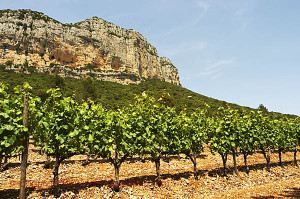 Agricultural cooperatives in France are numerous and influential. Not least in the wine business. In Languedoc almost 2/3 of the surface planted with vines are owned by wine growers belonging to a cooperative. This means 150,000 hectares and 15,000 cooperative wine growers. Every year the cooperatives compete with their wines in a prestigious competition held in March. Gold, silver and bronze medals are awarded to the best wines.
Agricultural cooperatives in France are numerous and influential. Not least in the wine business. In Languedoc almost 2/3 of the surface planted with vines are owned by wine growers belonging to a cooperative. This means 150,000 hectares and 15,000 cooperative wine growers. Every year the cooperatives compete with their wines in a prestigious competition held in March. Gold, silver and bronze medals are awarded to the best wines.
The wines that have won gold medals go on to another competition called Coup de Coeur de Femmes Journalistes (Female journalists’ favourites). The 2015 edition of the Coup de Coeur was held in early June and these were the winners:
- Red wine: Cuvée Roche Fourcade, IGP Cévennes Blanc 2013 Les Terrasses Cevenoles à Saint Hippolyte du Fort, 5.90 EUR
- Rosé wine: Syrah Rosé Cuvée M, IGP Pays d’Oc 2014, Les Vignobles de Montagnac, 3.90 EUR
- White wine: Cuvée Latude, AOC Languedoc-Pézenas 2013, Les Vignerons de Fontes, La Fontésole à Fontes, 10.45 EUR
- Vin Doux Naturel: Cuvée Haute Coutume, Vin doux naturel AOC Rivesaltes Ambré 1988, Les Vignerons Catalans à Perpignan, 19.90 EUR
The female part of the BKWine is sometimes part of the jury, but not this year.
Selling wines to Swedish consumers, what are the rules?
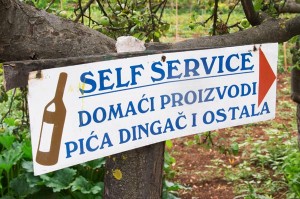 If you are a wine producer you might wonder what the rules are for selling to Swedish consumers. Or if you happen to live in Sweden, you might wonder if and how you can buy from producers or shops in other countries in Europe. The question is the same and we have done some research to clarify the rules, perhaps particularly interesting for the reader who is a wine producer with Swedish contacts or the occasional Swedish visitor. The rules are simple but there are two different cases:
If you are a wine producer you might wonder what the rules are for selling to Swedish consumers. Or if you happen to live in Sweden, you might wonder if and how you can buy from producers or shops in other countries in Europe. The question is the same and we have done some research to clarify the rules, perhaps particularly interesting for the reader who is a wine producer with Swedish contacts or the occasional Swedish visitor. The rules are simple but there are two different cases:
1) The buyer (a private individual) buys directly from a producer or a local shop somewhere in Europe. Then the buyer, in Sweden, must pay the Swedish alcohol taxes when the wines enter Sweden, but not VAT.
2) If they buyer buys through “a third party”, for example one of the many internet shops targeting Swedish consumers, then both alcohol taxes and VAT must be paid. But that is in most cases automatically taken care of by the web shop. I do not know to what these rules are also valid for other countries. If there is any restrictions at all.
You can read a much more detailed explanation of this in our article: Buying wine from a winery or wine shop abroad: “direct import”.
Wine regions are also World Heritage!
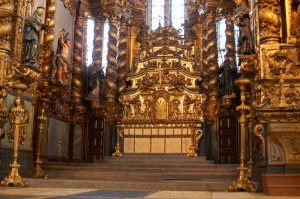 We have just had a mini-series about wine regions that are on the UNESCO list of World Heritage Sites. Nine different wine regions are on the list that we have. Of the nine wine regions we do, or have we done, wine tours to seven. Seven out of nine, not bad! To four of them, we have regularly scheduled trips.
We have just had a mini-series about wine regions that are on the UNESCO list of World Heritage Sites. Nine different wine regions are on the list that we have. Of the nine wine regions we do, or have we done, wine tours to seven. Seven out of nine, not bad! To four of them, we have regularly scheduled trips.
In most cases it is not for the wine’s sake that these regions are included on the UNESCO list, but instead for the landscape or its cultural value. (Is not wine culture then?) You can read the introduction and the entire series of articles on all of the nine wine regions on the BKWine Travel Blog.
But perhaps we have missed something? Do you know other wine region that is on the UNESCO list of World Heritage? Let us know!
South African wines: well on their way to international top quality | Britt on Forbes
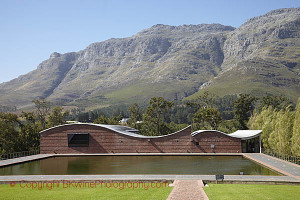 “South Africa’s wine industry is entering into the next chapter of its success story. It is time to shake off the image of “cheap and easy” wines and show the world that South Africa is also – since quite some time – capable of top quality. For 20 years South Africa has been giving us cheap wines of reliable quality. But rest assured, things have changed. The country has so much more to offer. South Africa is just now realising its potential. I have been there several times over the last five years and it has been fascinating.”
“South Africa’s wine industry is entering into the next chapter of its success story. It is time to shake off the image of “cheap and easy” wines and show the world that South Africa is also – since quite some time – capable of top quality. For 20 years South Africa has been giving us cheap wines of reliable quality. But rest assured, things have changed. The country has so much more to offer. South Africa is just now realising its potential. I have been there several times over the last five years and it has been fascinating.”
Read more on this in Britt’s article on BKWine Magazine: South African wines: well on their way to international top quality | Britt on Forbes. The article was originally published on Forbes.
In February-March you have the possibility to explore the wines of South Africa on site together with Britt (and Per) on BKWine’s wine Tour to South Africa!
Our friends at Gomez Cruzado in Rioja wins award
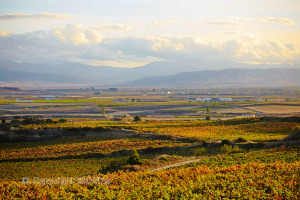 When we travel to Rioja we often visit Bodegas Gomez Cruzado. It is the smallest of all the bodegas, ie wine producers, located in the legendary area called Barrio de la Estación in Haro, the second largest (but still small) town in Rioja. One could almost call them a “boutique bodega” in comparison with many of the more famous and much larger bodegas. They have just received a very nice award from TripAdvisor, Certificate of Excellence. Read more about it on BKWine Travel Blog: Congratulations Bodegas Gomez Cruzado in Rioja! [divider_flat]
When we travel to Rioja we often visit Bodegas Gomez Cruzado. It is the smallest of all the bodegas, ie wine producers, located in the legendary area called Barrio de la Estación in Haro, the second largest (but still small) town in Rioja. One could almost call them a “boutique bodega” in comparison with many of the more famous and much larger bodegas. They have just received a very nice award from TripAdvisor, Certificate of Excellence. Read more about it on BKWine Travel Blog: Congratulations Bodegas Gomez Cruzado in Rioja! [divider_flat]
Dreaming of a vineyard in France? Here’s the price tag | Per on Forbes
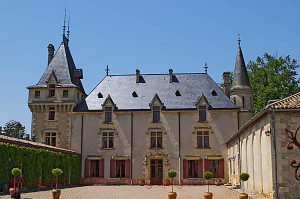 Are you nurturing a secret dream of becoming a vigneron in France, just like Brad Pitt and Angelina Jolie? They bought the Chateau Miraval for a reported $60 million in 2013. You can get away with less than that but don’t count on it coming cheap. If you want to buy a vineyard in France you can count on the average price being, according to the 2014 statistics, 136,400 euro per hectare for appellation land. That is $61,000 for an acre.
Are you nurturing a secret dream of becoming a vigneron in France, just like Brad Pitt and Angelina Jolie? They bought the Chateau Miraval for a reported $60 million in 2013. You can get away with less than that but don’t count on it coming cheap. If you want to buy a vineyard in France you can count on the average price being, according to the 2014 statistics, 136,400 euro per hectare for appellation land. That is $61,000 for an acre.
Read more on this in Per’s article on BKWine Magazine: The price of vineyard land in France | Per on Forbes. The article was originally published on Forbes.
East of the Rhone River: A journey with wine from Montelimar to Beaumes de Venise
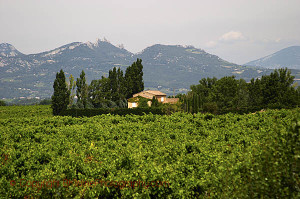 Cotes du Rhone is France’s second largest appellation contrôlée (after AOC / AOP Bordeaux) and spreads its 42,000 hectares on both sides of the river Rhone. Obviously, the quality varies enormously in such a large area and there are also significant price differences. Cheapest are the wines from the numerous cooperatives. These wines can be decent but it gets more interesting if you move up to the more ambitious independent winemakers who pop up here and there and that really take advantage of the potential of the area. Many of those we find in the departments of Drôme and Vaucluse, east of the river.
Cotes du Rhone is France’s second largest appellation contrôlée (after AOC / AOP Bordeaux) and spreads its 42,000 hectares on both sides of the river Rhone. Obviously, the quality varies enormously in such a large area and there are also significant price differences. Cheapest are the wines from the numerous cooperatives. These wines can be decent but it gets more interesting if you move up to the more ambitious independent winemakers who pop up here and there and that really take advantage of the potential of the area. Many of those we find in the departments of Drôme and Vaucluse, east of the river.
Read more on Rhone Valley wines in Britt’s article on BKWine Magazine: East of the Rhone River: A journey with wine from Montelimar to Beaumes de Venise.
Discover white Bordeaux
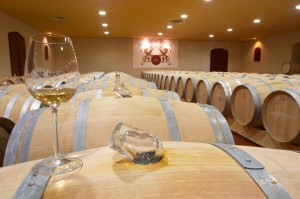 Sauvignon Blanc is a grape that we associate mainly with the aromatic Sancerre and Pouilly-Fumé wines but another well-known French district uses this grape too, namely Bordeaux. These wines were long suffering from a bad reputation that was difficult to shake off. They were regarded as boring and without freshness, often with a little residual sweetness. Today they have come far away from both the reputation and the once upon a time existing truth behind. New and better technology, more precise work in the vineyard, fermentation in oak barrels and much more means that today you find great white Bordeaux wines in all price ranges.
Sauvignon Blanc is a grape that we associate mainly with the aromatic Sancerre and Pouilly-Fumé wines but another well-known French district uses this grape too, namely Bordeaux. These wines were long suffering from a bad reputation that was difficult to shake off. They were regarded as boring and without freshness, often with a little residual sweetness. Today they have come far away from both the reputation and the once upon a time existing truth behind. New and better technology, more precise work in the vineyard, fermentation in oak barrels and much more means that today you find great white Bordeaux wines in all price ranges.
Read more recommendations on excellent white Bordeaux wines in Britt’s article on BKWine Magazine: Discover white Bordeaux.
And if you want to get even more up close and personal with white Bordeaux (and who doesn’t?) you can join BKWine on our Bordeaux wine tour in September.
Chardonnay, a beloved globetrotter
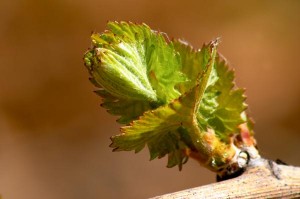 Is there any white wine grape that is more loved all over the world than chardonnay? It may have a natural explanation. It is a grape that fits everyone. It is easy to grow, easy to vinify and easy to like. It can be grown almost anywhere. It has its roots in Burgundy’s relatively cool climate, but it thrives well in both warmer and colder climates. It is grown with great success, not only in Burgundy and Champagne, but also in Italy, USA, Australia, New Zealand, Chile and other countries.
Is there any white wine grape that is more loved all over the world than chardonnay? It may have a natural explanation. It is a grape that fits everyone. It is easy to grow, easy to vinify and easy to like. It can be grown almost anywhere. It has its roots in Burgundy’s relatively cool climate, but it thrives well in both warmer and colder climates. It is grown with great success, not only in Burgundy and Champagne, but also in Italy, USA, Australia, New Zealand, Chile and other countries.
Read more in Britt’s article on BKWine Magazine: Chardonnay, a beloved globetrotter.
Time for an aperitif?
Mixed drinks, or cocktails, are becoming more and more popular to drink as an aperitif and you can hardly open a food or wine magazine today without reading about it, or getting the bartender’s best tips. What happened to all the traditional southern French aperitifs such as Byrrh, Dubonnet and pastis?
Read more on these and others in Britt’s article on BKWine Magazine: Time for an aperitif? [divider_flat]
Bordeaux: Saint-Emilion and Pomerol, an introduction
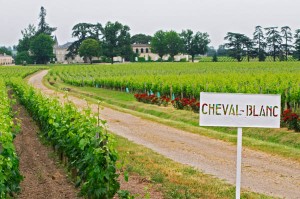 Saint-Emilion and Pomerol are in many ways different from the aristocratic Médoc. Here chateaux are smaller, if at all they can be called chateau. The scenery is prettier with rolling hills and with the lovely medieval town of Saint Emilion, one of France’s most charming wine villages. The wines too are different and in much the same way. The high tannins and rigid structure of the Médoc wines have been replaced by a roundness, fullness and a softer fruit. Saint Emilion and Pomerol wines are more immediately appealing and ready to drink at an earlier age than the Médoc wines.
Saint-Emilion and Pomerol are in many ways different from the aristocratic Médoc. Here chateaux are smaller, if at all they can be called chateau. The scenery is prettier with rolling hills and with the lovely medieval town of Saint Emilion, one of France’s most charming wine villages. The wines too are different and in much the same way. The high tannins and rigid structure of the Médoc wines have been replaced by a roundness, fullness and a softer fruit. Saint Emilion and Pomerol wines are more immediately appealing and ready to drink at an earlier age than the Médoc wines.
Read more on “the Right Bank” in Britt’s article on BKWine Magazine: Bordeaux: Saint-Emilion and Pomerol, an introduction.
To go even more in depth on Bordeaux wines you can join BKWine on our Bordeaux wine tour in September.
Oak aged vodka? Absolut and its latest declination Absolut Oak
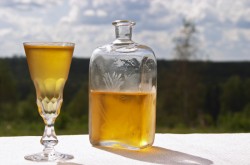 Our traditional Swedish vodka Absolut became a worldwide success. This was also one of the reasons that the then Swedish government sold off its state-owned and highly profitable producer called Vin & Sprit, and with it our entire cultural heritage of Swedish-produced alcohol, to the French company Pernod Ricard. All our traditional domestic products such as mulled wine, Swedish punsch, aquavit and flavoured spirits are today manufactured abroad. Absolut Vodka is an exception. Now they have launched a vodka that has spent quite some time in oak barrels: Absolut Oak.
Our traditional Swedish vodka Absolut became a worldwide success. This was also one of the reasons that the then Swedish government sold off its state-owned and highly profitable producer called Vin & Sprit, and with it our entire cultural heritage of Swedish-produced alcohol, to the French company Pernod Ricard. All our traditional domestic products such as mulled wine, Swedish punsch, aquavit and flavoured spirits are today manufactured abroad. Absolut Vodka is an exception. Now they have launched a vodka that has spent quite some time in oak barrels: Absolut Oak.
Read more on this unusual vodka in Roland Eriksson’s article on BKWine Magazine: Oak aged vodka? Absolut and its latest declination Absolut Oak.
Uncorked: Good wines we have tasted recently, July 2015
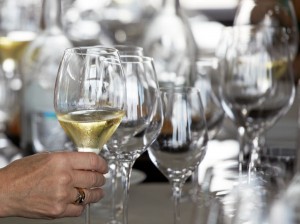 Uncorked: Under this heading we collect various wines that we have tasted, and liked, recently. It can be wines that we have had during dinner at home, at wine tastings, press lunches, visits to vineyards, or other occasions.
Uncorked: Under this heading we collect various wines that we have tasted, and liked, recently. It can be wines that we have had during dinner at home, at wine tastings, press lunches, visits to vineyards, or other occasions.
This month: Some really good Beaujolais, a delicious white from the Loire made with the unusual grape Romorantin, mature white Bordeaux, really old Rioja, red from Mallorca, still Champagne, fantastic Brunello and finally, the highlight of the month, a 34 year old La Mission Haut Brion.
Read more in Britt’s article on BKWine Magazine: Uncorked: Good wines we have tasted recently, July 2015.
Egri Bikaver, new generation Bull’s Blood from Hungary | Britt on Forbes
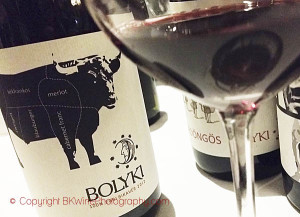 Hungary as a wine region has been around for quite some time. However, I doubt that the wines have ever been as good as they are today. Many people automatically think of Tokaj when Hungarian wine is discussed. Tokaj has always been the prestige region of Hungary, producing sweet wines of rare intensity. But dig a little deeper and you will find amazing dry whites and reds as well. Not least the amazing Egri Bikavér. Wherever you go in the Hungarian wine regions today, Tokaj or elsewhere, things have evolved enormously. Our first trip to Hungary was in 2004. We went to Tokaj and Eger and we tasted some very good wines. But now quality is first class. And the wines are also exciting for the wine lover who is tired of seeing the same grape varieties over and over again.
Hungary as a wine region has been around for quite some time. However, I doubt that the wines have ever been as good as they are today. Many people automatically think of Tokaj when Hungarian wine is discussed. Tokaj has always been the prestige region of Hungary, producing sweet wines of rare intensity. But dig a little deeper and you will find amazing dry whites and reds as well. Not least the amazing Egri Bikavér. Wherever you go in the Hungarian wine regions today, Tokaj or elsewhere, things have evolved enormously. Our first trip to Hungary was in 2004. We went to Tokaj and Eger and we tasted some very good wines. But now quality is first class. And the wines are also exciting for the wine lover who is tired of seeing the same grape varieties over and over again.
Read more in Britt’s article on BKWine Magazine: Egri Bikaver, new generation Bull’s Blood from Hungary | Britt on Forbes. The article was originally published on Forbes.
Book Award #1: Our book “France, The Country of Wine” wins the OIV Award for Wine and Territories
 We are very proud and happy: Our book “France, The Country of Wine” has won the prestigious OIV Award in the category “Wine and Territories’! We feel very honoured that our book about France and French wines won this award or prize in this international competition. OIV (International Organisation of Vine and Wine, or L’Organisation Internationale de la Vigne et du Vin) is a sort of UN for wine for all the countries that make wine.
We are very proud and happy: Our book “France, The Country of Wine” has won the prestigious OIV Award in the category “Wine and Territories’! We feel very honoured that our book about France and French wines won this award or prize in this international competition. OIV (International Organisation of Vine and Wine, or L’Organisation Internationale de la Vigne et du Vin) is a sort of UN for wine for all the countries that make wine.
Read more in Per’s article on BKWine Magazine: Book Award #1: Our book “France, The Country of Wine” wins the OIV Award for Wine and Territories.
Unlimited photo storage on-line
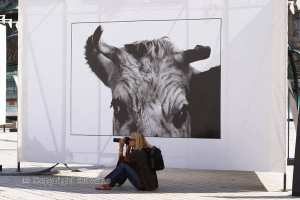 For those who are fond of photography this may be of interest: Amazon has recently launched something they call “unlimited photo storage on-line”, in the cloud. It’s one of the things they offer in their service bundle “Amazon Prime” (or Premium in some countries). Prime contains some other interesting services as well, but for a photographer it is undeniably unlimited storage the most interesting. Today when photography is digital and stored on hard drives, you must have a backup, backup. MUST! If you are a professional it should be an obvious non-issue (but unfortunately it is not always so!). But even for an “amateur” it is important. You do not want all your images to suddenly disappear because of a disk crash. Well, it happens quite often!
For those who are fond of photography this may be of interest: Amazon has recently launched something they call “unlimited photo storage on-line”, in the cloud. It’s one of the things they offer in their service bundle “Amazon Prime” (or Premium in some countries). Prime contains some other interesting services as well, but for a photographer it is undeniably unlimited storage the most interesting. Today when photography is digital and stored on hard drives, you must have a backup, backup. MUST! If you are a professional it should be an obvious non-issue (but unfortunately it is not always so!). But even for an “amateur” it is important. You do not want all your images to suddenly disappear because of a disk crash. Well, it happens quite often!
To save the images in the cloud has previously been too expensive. Several tens of thousands per year if you have a quantity of pictures. But with Amazon Prime it costs 50 euros per year! Is it true? Does it work? I decided to test-drive Amazon Prime Unlimited Online Photo Storage. Read my report on the BKWine Photography Blog. I will soon publish another analysis of an alternative supplier who also recently started offering unlimited storage space. In a few weeks time.
Don’t be an egoist! Share with your friends and other wine enthusiasts! Forward the Brief to your friends! Suggest that they sign up for a free subscription !
© Copyright BKWine







